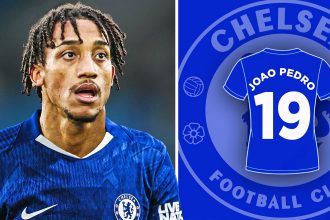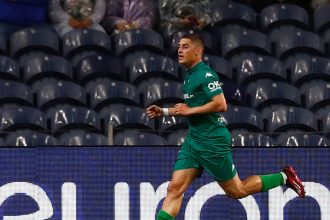da cassino online: Making an astonishing debut, the bespectacled Hirwani finishedwith a match haul of 16 for 136, the best-ever figures by abowler in his first Test
da fezbet: Partab Ramchand29-Oct-2002With the retirement of stalwarts like Clive Lloyd, Larry Gomes,Andy Roberts, Michael Holding and Joel Garner, the West Indies inthe late 80s were not as formidable as they were earlier in thedecade. But they remained the best side in the world. Some of theolder stars like Viv Richards, Gus Logie, Gordon Greenidge,Desmond Haynes, Jeff Dujon, Winston Davis and Richie Richardsonwere still around, Carl Hooper was a shining new star on thehorizon, and adequate fast-bowling replacements had beenunearthed in Courtney Walsh, Patrick Patterson and WinstonBenjamin.
Making an astonishing debut, the bespectacled Hirwani finishedwith a match haul of 16 for 136, the best-ever figures by abowler in his first Test. Only Australian swing bowler Bob Massiehad taken 16 wickets in his first Test, against England at Lord’sin 1972, and interestingly enough, his match haul was 16 for 137.
So it was a confident West Indian side that visited India for thetour in 1987-88, despite the debacle in the just-concludedReliance World Cup, in which the team quite unexpectedly failedto qualify for the semifinals. The final score line a 1-1 drawin the four-match series may not have qualified as a fairresult, for the West Indies did seem to have the edge of theexchange. But there was no such close result in the eight-matchone-day international series, in which the West Indies routedIndia 7-1.It was an astonishing spin trick on a responsive pitch that sawIndia square the series in the final Test at Madras. In the firsttwo Tests, they had been squarely at the receiving end. They hadlost the first Test in New Delhi by five wickets after being shotout for 75 in the first innings the lowest total by India athome. They were a trifle fortunate in getting away with a draw inthe second Test at Bombay. Over 10 hours play was lost on thefirst three days because of rain, but despite this, at the end ofthe Indian second innings, the West Indies had to make 118 forvictory in 11 overs. They however rejected the challenge afterfacing only two overs.The third Test, played on a placid Eden Gardens pitch, was alwaysgoing to be a high-scoring draw, and so the West Indians arrivedat Chepauk still one-up in the series. Here the authoritiesensured a woefully under-prepared track, and India played threespinners in stand-in captain Ravi Shastri, Arshad Ayub and 19-year-old debutant leg-spinner Narendra Hirwani.The West Indian counter to this was to also play three spinnersin Richards, Clyde Butts and Hooper. But whereas they took onlyfour of the 18 Indian wickets that fell in 89 overs, conceding250 runs, the Indian trio accounted for 18 of the 20 wickets tofall in 93.5 overs, conceding 270 runs. In short, India had thebowlers to exploit the conditions whereas the West Indians didnot. The biggest disappointment was Butts, who sent down 45 oversand conceded 124 runs without taking a wicket.Making an astonishing debut, the bespectacled Hirwani finishedwith a match haul of 16 for 136, the best-ever figures by abowler in his first Test. Only Australian swing bowler Bob Massiehad taken 16 wickets in his first Test, against England at Lord’sin 1972, and interestingly enough, his match haul was 16 for 137.Extracting maximum turn from the responsive pitch, making theball bounce awkwardly, Hirwani was virtually unplayable as hetook eight for 61 and eight for 75 to bring the match to a swiftconclusion on the fourth evening, with India winning by 255 runs.The visitors were livid at the sub-standard quality of the pitch,and Richards vowed revenge, muttering, “I have got a long memory,maan” as he looked ahead to the return visit of the Indians tothe Caribbean in 1989. But other than that debacle in adverseconditions at Madras, the West Indian batting acquitted itselfcreditably. Richards won the first Test for his side with amasterly unbeaten 109 off 102 balls. Greenidge, Logie and Hooperall made hundreds in the batsman-friendly conditions at Calcutta,while Richardson and Desmond Haynes had their moments. In thebowling department, Walsh displayed his undoubted skill inbagging 26 wickets at just 16.80 apiece, while Patterson andDavis were admirable in support.For India, Dilip Vengsarkar, then in the midst of a Bradmanesquerun, hit two hundreds in three Tests before a ball from Davisfractured his left hand. He also became Indian captain in his96th game, making him the most senior cricketer to be firstappointed as Test captain. Kapil Dev came up with a marveloushundred on the dirt track at Chepauk, while Mohammad Azharuddin,Krishnamachari Srikkanth and Arun Lal chipped in with valuablecontributions. Srikkanth in particular rose to the occasion atBombay, where he top-scored in both innings with 71 (off 63 ballswith 11 fours and a six) and 65 (off 78 balls with 10 fours) inadverse conditions, challenging the fast bowlers with fearlesshooking and driving.The bowling, however, generally made little impression untilthe final Test, when Hirwani made the West Indians dance to histune. But perhaps he would be the first to admit that he mightnot have achieved his magical figures without the help of KiranMore, who set dual world records by stumping five batsmen in aninnings and six in the match.






